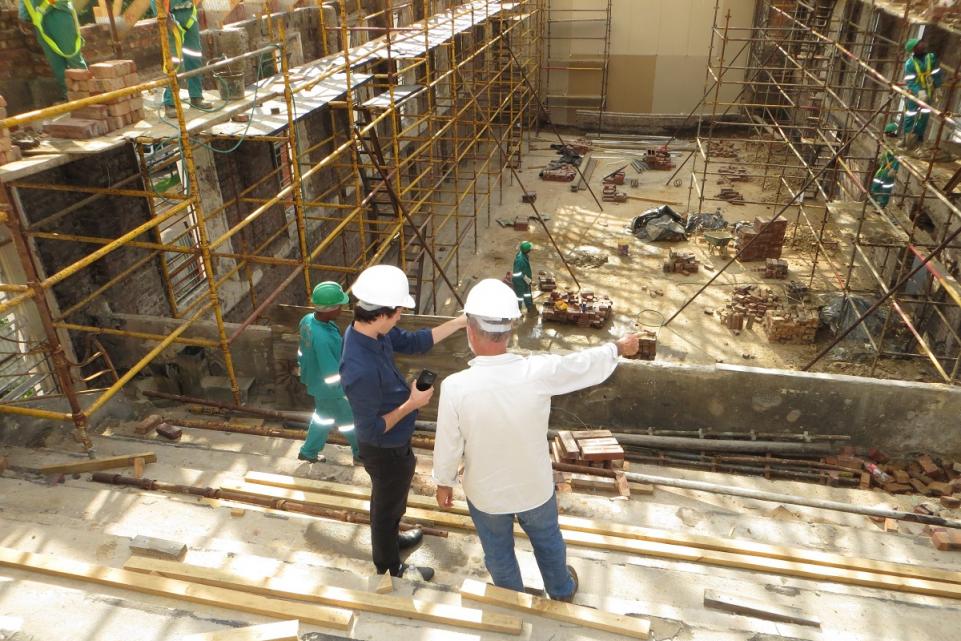A letter from Councillor Adele Morris to MHCLG
Cllr Adele Morris Deputy Chair
EEHT Board
LGA Liberal Democrat Group
Local Government Association
18 Smith Square London,
SW1P 3HZ
By email to: [email protected]
Dear MHCLG,
I write in response to the consultation on the “Planning for the Future” White Paper on behalf of the LGA Liberal Democrat Group.
Introduction
Liberal Democrats support the principle of community empowerment, devolving decision making to the most local level possible. The proposals in the White Paper take away many of the opportunities for communities and their locally elected representatives to have a final say on how their areas develop. We therefore fundamentally object to the underlying premise of this paper, which is to undermine democratic accountability. Whilst we agree that there are elements of the planning system that could benefit from improvement, we disagree with the Minister’s opening statement that we have “an inefficient, opaque process and poor outcomes”. We specifically disagree with any suggestion that the root cause of issues with the planning system lies entirely at the hands of councils and communities.
The White Paper bemoans the delay in planning processes, the lack of certainty for applicants and communities and too many policy demands from councils. But much of the wrangling between applicants and councils is around viability, the use of which was bolstered as a material planning consideration in the NPPF and which has often led to all parties coming out of that process dissatisfied.
There have already been multiple amendments to the planning system under the current Government, which have undermined the ability of local councils and communities to shape their areas, and to achieve the mixed and balanced development and infrastructure that is needed to create environmentally, equitably and economically sustainable places to live, work and play.
Recent extensions to Permitted Development Rights have increased the opportunity for the delivery of substandard living accommodation, which also comes without the necessary physical or social infrastructure to support an increased population.
Whilst we appreciate that there is a need to diversify the offer on our high streets to make them relevant and sustainable, the recent changes to the Use Class Orders may also have an unintended detrimental impact if local councils are no longer able to control changes of use through the planning process.
On the recently proposed “Changes to the Planning System”, the Government’s suggestion of yet another new set of ways to calculate housing need would create more work and uncertainty for councils and communities, and still doesn’t get to the heart of the problem of under supply of housing. Also, using a blunt tool to calculate housing need that does not take into consideration the geographical or other constraints of local areas will simply lead to more development in unsustainable and inappropriate locations.
Councils are already threatened with punishment if they fail the Housing Delivery Test and yet they are approving 9 in 10 planning applications and there are an estimated 1 million homes that have already been agreed but which remain unbuilt. We would therefore suggest that it is not the councils or the communities that are at fault, it is the developers and landowners who have been allowed to inflate their prices to create undeliverable schemes or sit on land for an increased “hope value” when they resell. They can game the system by submitting planning applications they know will fail, as a way of establishing, through the appeal system, what's the most they can get out of the process. They then blame the “system” for the inevitable delays. The LGA Liberal Democrats would support moves to reduce the ability for the hoarding of land by introducing some form of land value capture, which would benefit the local community whilst still allowing a profit for landowners.
In the “Changes to the Planning System” consultation, there was also a proposal to raise the threshold to 40 or 50 homes before affordable housing is delivered, which we disagreed with in our submission to that consultation. This will only exacerbate the existing problem of there not being enough homes built that local people can afford to rent or buy.
Overall there is a concern that whilst the simplification of the system may speed up some of the decision making and the certainty for applicants, councils and communities it will not lead to better designed, built or appropriate development.
We have chosen not to answer the individual consultation questions in technical detail here, however we contributed to the comprehensive cross party response that was sent by the LGA. We also endorse the responses submitted by our Liberal Democrat led Councils, and this climate focussed response from CSE/TCPA. Our specific comments on the Planning for the Future White Paper proposals are as follows:
Pillar 1: planning for development
Proposal 1
We do not agree that all land should be put into one of three “types”, as this may provide certainty for developers but constrains any future ambitions of local councils and communities. We do not believe that the examples given of where it applies in other countries illustrates sufficiently that it would also work here.
Those with planning expertise that have already commented on the proposals, such as Bartlett School of Planning at UCL, have made clear that three zones is not enough, and that in those countries that use zoning, there are large numbers of sub-categories and codes that define the zones.
We would not be able to support a proposal to allow areas to be designated as protected in situations where doing so would lead to either neighbouring areas of open countryside, or towns and cities having to intensify their development such that it negatively impacts their quality of life. Overall, we should be aiming to tighten the environmental standards of all buildings, increase and protect biodiversity and nature, and improve air quality for all of our communities. Whilst there is some acknowledgement that the Duty to Co-operate has not been a success in all areas, it is important to retain some element of regional overview of planning to prevent this from happening.
Proposal 2
We support the principle of speeding up the plan making process, however we question whether nationally set policies should apply across the board, with only limited scope for specific local development management policies. There is a reason why the current system allows for locally set policies to be included in a plan, as this reflects local circumstances and expectations from future development that meets the needs of the area. Given that local plans currently have to be approved by an Inspector to validate their viability and soundness, it is not unreasonable to assume that the policies in a local plan have therefore been tested against their deliverability. If development is unable to meet the policies in a local plan, then there is something wrong with the development – which is frequently blamed on the “viability” of a scheme based on subsequent profits and land values.
The proposals stand to create a two-tier system. It's doubtful that planning authorities will be adequately resourced to carry out design code production to the level of detail required to generate good outcomes. The consultation itself acknowledges that coverage will not be universal, with development in some areas falling back to the application of general national design codes. If design codes and guides are to replace planning applications, they must be universal. Growth areas without local design codes will in effect experience the wholesale removal of the planning system, and the removal of any opportunity to influence how their area develops. It is likely that the 'protected' zones are going to be overwhelmingly in affluent areas, while growth and renewal zones will be in areas of lower actual and social capital. The proposals stand to widen social divides.
We note the comments on roles for Neighbourhood Plans to be involved with setting the design parameters as proposed in paragraph 2.14, however this may be difficult to achieve without additional support. We do acknowledge that there are some examples of good practice where councils and Neighbourhood Plan groups have produced successful design guides. We would welcome more information on who arbitrates locally what is good/appropriate design, especially when there are disputes on design codes. Whilst we welcome the opportunity to raise design standards in all development, we are concerned that a design “pattern book” could lead to “identikit” housing being rolled out across an area.
It is also unclear what the role of any emerging or new Neighbourhood Plan would be in a scenario where all land has already been allocated under the 3 suggested areas in proposal 1. And what happens to any existing NDPs, which may have taken years to produce - will they suddenly lose their status as having material weight in planning?
Proposal 3
We are concerned that the paper does not make climate action, carbon reduction or biodiversity a key priority. We are aware that others have sent in very detailed and technical comments on this area of the proposals, and trust that you will take those concerns into account. If the planning system is not able to deliver net-zero developments from the outset, then it becomes an active enabler of the climate crisis in and of itself. Continuing to postpone the requirements for Zero Carbon homes, which would have come into force in 2016 if the current Government hadn’t dropped the proposal, along with the suggestion in the Future Homes Standard consultation that councils will not be able to impose their own higher standards, will not help the climate crisis or our commitments to meet Carbon Net Zero.
Proposal 4
As stated earlier, we have concerns about the “standard methods” used to calculate housing need. In addition to those previously mentioned, we are concerned about the over reliance on “numbers” as opposed to the quality, cost, suitability and location of housing provided.
Proposal 5
We are concerned that the proposals for the growth areas to have outline permission granted on the adoption of at the local plan does not allow for changes in circumstance during the 10 years of the plan’s proposed life. There is also concern about the inability of local communities and councillors to participate in the decision making on any proposals further down the line.
Overall we are concerned that the proposals will not lead to the increased level of community engagement and participation that is anticipated at the plan making stage. We support an increased role for communities in the process however in the majority of cases, planning often only excites people when a “controversial” application comes forward and that is unlikely to change. Without substantial investment by the Government into this process, which will require an understanding of community development as well as planning legislation, there is no way that councils can reach and engage a wider audience. We are particularly concerned about the increased use of digital processes and social media, which may lead to greater participation (although there is no guarantee) however those who are digitally excluded and socially disadvantaged may be no more able to engage than they are now.
Proposal 6
We welcome any improvements to the application process that makes it easier for applicants to submit plans and for councils to be able to process them more efficiently and publicise them more clearly through a simplified digital platform. However, as previously mentioned we remain unconvinced that this will be sufficient to increase the engagement and participation from communities.
We do not agree with paragraph 2.40 that there should be an automatic refund of a planning fee if an application is not determined within the statutory time limits. This Government has already changed the regulations so that an applicant can automatically go to appeal if a planning application has not been determined within the statutory time limit. We do not believe that councils deliberately thwart the process for applicants, and so punishing councils still further will not achieve anything. On the contrary – it would further deplete the resources that planning departments have to carry out their duties. We would also be concerned that this could lead to the emergence of a 'no win, no fee' planning appeals industry, as happened with S106 negotiations when viability was given greater weight in the NPPF, and therefore a huge increase in the number of vexatious appeals being launched.
We do not agree that applications should be automatically granted if a council fails to determine them within the statutory time frame.
We note in paragraph 2.41 that the Secretary of State will still be able to override local decisions, or even those of a Planning Inspector. This White Paper seems to seek to undermine the ability of local councils and communities to have a role in determining applications whilst still maintaining, or even enhancing, the ability for developers, Planning Inspectors and the Minister to overrule local decisions. We do not believe that an applicant should have their fees returned if they are successful at appeal when a planning committee has refused an application. The applicant will already have their costs covered by the appeal, and again a refund of fees would further undermine the ability of councils to perform their duties.
Proposal 7
We welcome the use of interactive, map based Local Plans as a way to increase access to the planning system however, we remain concerned that there will be an over reliance on online methods of public engagement to the exclusion of those who are unable to access or use the technology. We would like to see how the Government are going to support councils to achieve a greater reach into communities through a variety of engagement processes.
Proposal 8
We do not think that the proposed timetable of 30 months to produce a Local Plan is deliverable given that even more emphasis is placed on: engagement; design codes; defining areas for growth, renewal and protection; outline planning and development orders etc. We also maintain that there should be involvement of elected bodies, including parish and town councils at all stages of development and not just at plan making stage.
Proposal 9
We agree that Neighbourhood Plans should be retained under the new system however it is not clear how they fit in, and in particular how a new Neighbourhood Plan could be introduced once a Local Plan has been made.
Proposal 10
We completely agree that there should be a stronger emphasis on build out, and look forward to the Government taking forward the recommendations from the Letwin Review as well as giving further consideration as to how councils can be authorised to more actively intervene where schemes have stalled.
Pillar Two – Planning for Beautiful and Sustainable Places
Proposal 11
We are concerned that the use of National Design Guides, National Model Design Codes and a revised Manual for Streets effectively signals a desire for top down control, which both reduces democratic accountability and could lead to “identikit” housing appearing all over the country. It is unclear how the Government’s further aspiration to have “local guides and codes wherever possible” would then fit in with this system, nor how their detailed preparation would be funded.
Proposal 12
We note that the Government has already set up the new “expert body” to help councils make effective use of design guides and codes. We note also that there is a proposal to “improve the resourcing of planning departments” and we would like this to mean that the Government spends some money on the councils, to enable them to directly employ and train the right people to support the move to any new system that is put in place. We have concerns that the White Paper is not at all clear on the level of extra investment that councils will be given to enable them to carry out this work. In the context of planning departments already having seen a cut of over 60% funding in the past decade, we would need to see a commitment to replace that lost funding and then provide enhanced funding on top to ensure that design codes, upfront consultation, and seriously increased levels of enforcement would be possible.
Proposal 13
We welcome proposals to improve the overall design quality of buildings however, as previously stated we are concerned about having a nationally set standard. Proposal 14
We do not support any further changes to allow an increase in Permitted Development Rights through a “pattern book” of approved designs. We are conscious that many of the more recent increases to Permitted Development Rights have had a detrimental impact on our communities.
Proposals 15 and 16
It is unclear what the new system that the Government is proposing here will look like.
Proposal 17
We welcome opportunities to conserve our historic buildings and we recognise that all buildings need to adhere to better energy efficiency standards, and that sensitive adaptation will be necessary however, we feel that the proposals set out suggests that national policies may become less protective of historic fabric than current ones.
Proposal 18
We welcome moves to improve the environmental standards in homes, and await the Government’s response to the Future Homes Standard consultation. We would like to understand how the Government is going to support councils and developers to achieve better standards when “cost” is often cited as a reason for not achieving higher environmental standards in new developments. As previously noted, we are not on track to meet our carbon budgets in line with the climate change act, and every new home and development that now comes forward without zero-carbon at its heart merely adds to the carbon burden and creates a transfer of costs in future subsidy for householder retrofit.
Pillar Three – Planning for infrastructure and connected places
Proposal 19
We are concerned at the proposals to change to an Infrastructure Levy (IL) to replace the Community Infrastructure Levy and S106. Whilst we appreciate that there is a desire for a more simplified process, we object to the suggestion that this could be set nationally and linked to the sale value of the development, with a minimum threshold for smaller/lower value developments. Whilst we appreciate that we need more affordable homes, the suggestion that IL will replace S106 to pay for more affordable homes means that in low value areas there may be no way of securing a contribution to affordable homes or infrastructure. The document suggests that there will be more money to spend on affordable homes but that IL will also be paying for infrastructure. It can’t do both, so it is not clear how that will work. Currently S106 contributions are also used to mitigate the impacts of a development when it is not possible for it to be policy compliant, where the development creates new problems in an area which need to be addressed separately, and it also covers management arrangements and contractual agreements. We therefore think that councils should still be able to ask for contributions in cash or in kind for specific situations. We note that alongside this paper there are 4 other consultations, one of which is to temporarily lift the small sites threshold below which developers do not need to contribute to affordable housing from 10 units to 40 or 50. This, along with the current and recently extended permitted development rights, will have a severe impact on a council’s ability to deliver affordable housing in their areas. Whilst there is a proposal in the White Paper to include IL contributions in permitted development in the future, this will still leave a gap of several years where councils are missing out on affordable homes. There is a suggestion that IL is payable upon occupation of the development and that councils can borrow the money to put the infrastructure in upfront to enable development and then claim it back when the development is complete. This would shift the financial “risk” from developers to councils. But what happens if the development doesn’t happen, or it takes years longer than anticipated? Although the paper suggests that an approved permission cannot argue down the cost if the sales values are lower than anticipated, a new permission may have a lower value, depending on how much time has elapsed (given that despite the Government’s view, planning delays are not the only thing that prevent development from happening)
Proposal 20
We welcome the proposal to charge the Infrastructure Levy on permitted development. Proposal 21
We believe that if the proposed reformed Infrastructure Levy is introduced, it should be down to councils to determine how their affordable housing is delivered.
Proposal 22
We agree that councils should be given more freedom on how they spend the Infrastructure Levy, and we also agree that the existing provision for the neighbourhood share to be spent on priorities in the area that development occurred should remain.
Proposals 23 and 24
We welcome the proposals in this section to strengthen the role of councils in the planning process however we note that the Government proposes that much of the financial support for the changes should come from planning fees and developer contributions. We question whether that will be sufficient to support the radical overhaul of the system that is proposed in this paper.
Yours faithfully,
Councillor Adele Morris
Deputy Chair, EEHT Board
LGA Liberal Democrat Group
Email: [email protected]




